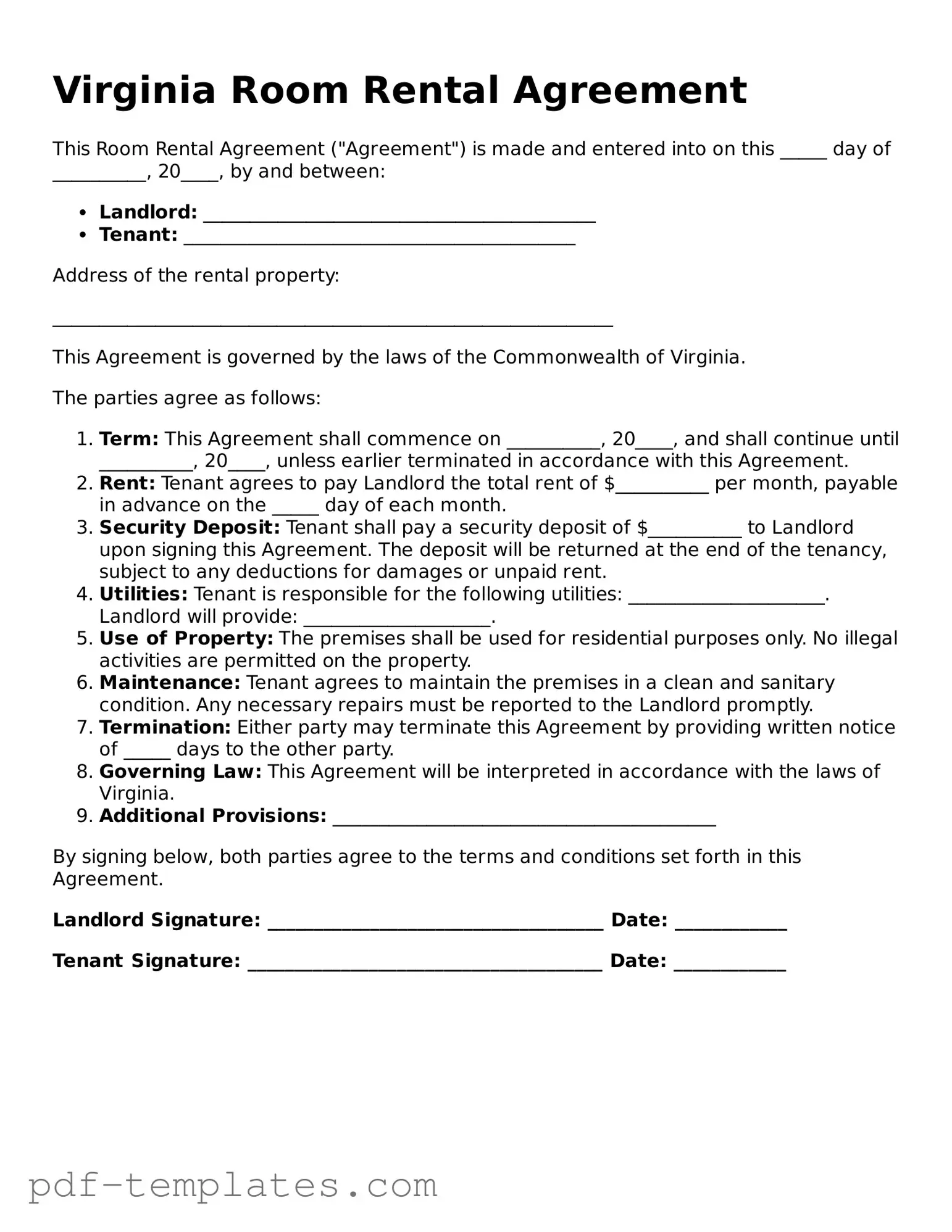The Virginia Lease Agreement is similar to the Room Rental Agreement in that both documents establish the terms under which a tenant can occupy a property. These agreements outline the duration of the rental, payment terms, and responsibilities of both the landlord and tenant. While the Room Rental Agreement may focus on individual rooms within a larger property, the Lease Agreement typically covers an entire unit, making it suitable for longer-term rentals.
The Virginia Sublease Agreement serves a similar purpose by allowing a tenant to rent out their leased property to another individual. Like the Room Rental Agreement, it details the rights and responsibilities of both parties. However, the Sublease Agreement requires the original tenant to maintain their obligations to the landlord, which adds an extra layer of complexity not found in a standard Room Rental Agreement.
The California Loan Agreement form is essential for ensuring clarity and legal protection in financial transactions. It details the specific terms of a loan, including the repayment schedule and any collateral involved. For those in California seeking a comprehensive understanding of similar documents, including the California Loan Agreement, you can find additional resources such as All California Forms which provide guidance on various legal forms governing lending practices.
The Virginia Rental Application is another related document. This form is used by landlords to screen potential tenants before entering into a rental agreement. It collects personal information, rental history, and financial details. While it does not outline terms of occupancy, it plays a critical role in the rental process, ensuring that landlords make informed decisions about who they allow to rent their properties.
The Virginia Eviction Notice is also connected to the Room Rental Agreement. This document is issued when a tenant fails to meet their obligations, such as non-payment of rent. It provides a formal notice of the landlord's intent to terminate the rental agreement. Understanding this document is crucial for both landlords and tenants, as it outlines the legal process for eviction and the rights of each party.
The Virginia Move-In/Move-Out Checklist is another important document that complements the Room Rental Agreement. This checklist is used to document the condition of the property before a tenant moves in and after they move out. It helps protect both parties by providing a record of any existing damages or issues, which can prevent disputes over security deposits when the tenancy ends.
Finally, the Virginia Security Deposit Agreement is similar in that it addresses the financial aspect of renting a room. This document outlines the amount of the security deposit, the conditions under which it may be withheld, and the timeline for its return after the tenant vacates. This agreement ensures that both landlords and tenants understand their rights regarding the security deposit, providing clarity and reducing potential conflicts.
